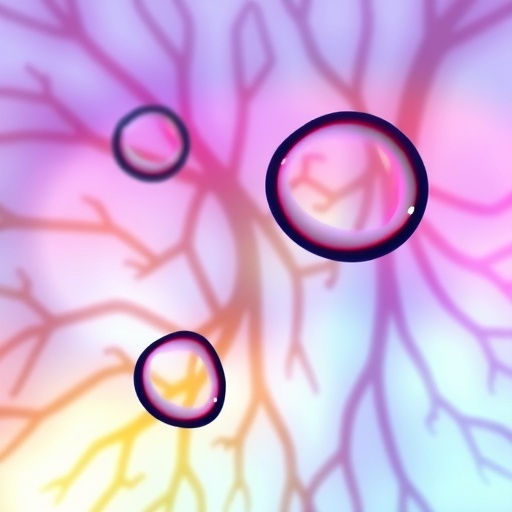A groundbreaking study by M. Yuksekkaya presents a new approach to combating neonatal jaundice with innovative phototherapy technology. Neonatal jaundice, a common condition affecting newborns, arises from the accumulation of bilirubin in the blood, leading to potential brain damage if untreated. Historically, treatment has relied on high-intensity light therapies, which can be prohibitively expensive and inaccessible, especially in low-resource settings. This research emphasizes the pressing need for affordable yet effective treatment alternatives, aiming to democratize access to essential healthcare technologies.
Yuksekkaya’s innovative design focuses on a low-cost phototherapy bed that leverages advanced photometric optimization. This optimization process ensures that the bed emits light at specific wavelengths that are most effective at breaking down bilirubin in the skin. By concentrating on this critical aspect, the research aims to increase the efficiency of treatment, ensuring that even lower intensities of light can yield significant therapeutic effects. This is particularly important as lower energy consumption not only translates to cost savings but also minimizes the potential risks associated with excessive light exposure.
A significant portion of the study is dedicated to the engineering challenges involved in creating a phototherapy unit that is both cost-effective and clinically effective. The design process considered various light sources, including LED technology, which offers flexibility in wavelength selection while maintaining low power consumption. LEDs have emerged as a cornerstone in modern phototherapy due to their ability to produce concentrated light in specific spectra, making them ideal for treating jaundice while reducing the heat emitted, which can be harmful to vulnerable infants.
In this advancement, the design incorporates a user-friendly interface that assists healthcare providers in monitoring and controlling treatment parameters. This feature is vital, particularly in under-resourced areas where medical staff may have limited experience with complex machinery. The intuitive design aims to ensure that anyone, from trained professionals to community health workers, can safely and effectively utilize the phototherapy bed.
The research also underscores the importance of thorough testing and validation of the phototherapy unit. Rigorous evaluations were conducted to assess light intensity, wavelength accuracy, and overall therapeutic efficacy. By simulating real-world conditions, the study ensures that the phototherapy bed can withstand various challenges, from power fluctuations to environmental variations typical in rural healthcare settings.
Yuksekkaya’s study isn’t just focused on efficacy; it also addresses practical concerns such as portability and ease of setup. The portable design allows healthcare personnel to easily transport the unit to different locations, thus enhancing the accessibility of treatment. This is particularly crucial in geographical areas where access to healthcare facilities is limited, ensuring that timely treatment reaches even the most remote populations.
The implications of this research are immensely far-reaching. By focusing on a low-cost alternative, healthcare systems worldwide can allocate their resources more effectively, prioritizing treatments that can save lives without incurring significant expenses. Jaundice is a preventable condition when treated promptly, and this innovation stands to significantly reduce morbidity and mortality rates associated with neonatal jaundice across various socio-economic strata.
The phototherapy bed’s aesthetic and functional design also enhances acceptance among both healthcare workers and families. A visually appealing device can help reduce anxiety in caregivers, who often face overwhelming stress when dealing with their newborn’s health issues. The combination of effective treatment with compassionate care is crucial, as it can foster a supportive environment that contributes to the overall well-being of both infant and family.
Future directions of research include adapting this design for use in other areas requiring phototherapy, such as treating skin conditions in older children and adults. The foundational work laid out by Yuksekkaya could inspire further innovations and refinements, creating a ripple effect that enhances healthcare across numerous disciplines. By prioritizing a user-centered design and cost-effectiveness, this research advocates for a more humane approach to medicine.
Collaboration with manufacturers and potential stakeholders in health systems will be pivotal for the transition from paper design to practical implementation. Engaging with communities to understand their specific needs and challenges will help tailor the final product. The successful deployment of this innovative technology hinges not just on its scientific design but also on its integration into the existing healthcare framework.
In conclusion, M. Yuksekkaya’s design and photometric optimization of a low-cost phototherapy bed represent a significant leap forward in the treatment of neonatal jaundice. By blending engineering with healthcare hurdles, this innovation promises to improve the quality of care provided to newborns globally. Its successful implementation could lead to a future where high-quality healthcare is accessible to all, regardless of economic constraints. With ongoing global health challenges, innovations like these are imperative for fostering equity in health and ensuring that no child is left untreated.
Subject of Research: Phototherapy for Neonatal Jaundice
Article Title: Design and Photometric Optimization of a Low-Cost Phototherapy Bed for Neonatal Jaundice
Article References: Yuksekkaya, M. Design and Photometric Optimization of a Low-Cost Phototherapy Bed for Neonatal Jaundice. Ann Biomed Eng (2025). https://doi.org/10.1007/s10439-025-03914-9
Image Credits: AI Generated
DOI: https://doi.org/10.1007/s10439-025-03914-9
Keywords: neonatal jaundice, phototherapy, LED technology, healthcare accessibility, cost-effective design, medical innovation
Tags: advanced photometric optimizationaffordable light therapy for infantsbilirubin breakdown in newbornscost-effective phototherapy solutionseffective treatment alternatives for jaundiceenergy-efficient phototherapy systemsengineering challenges in medical devicesInnovative healthcare technologieslow-resource healthcare innovationsneonatal healthcare accessibilityneonatal jaundice treatmentphototherapy bed design





